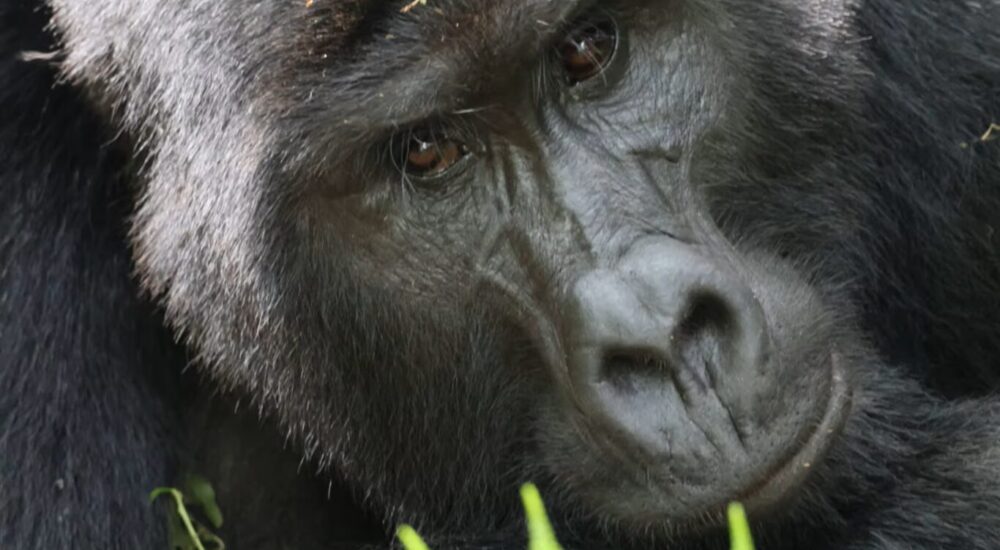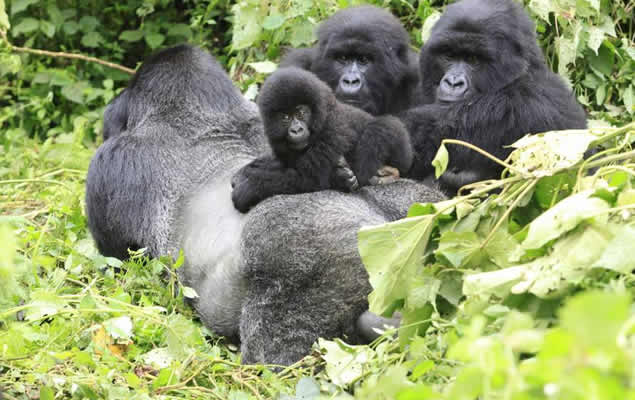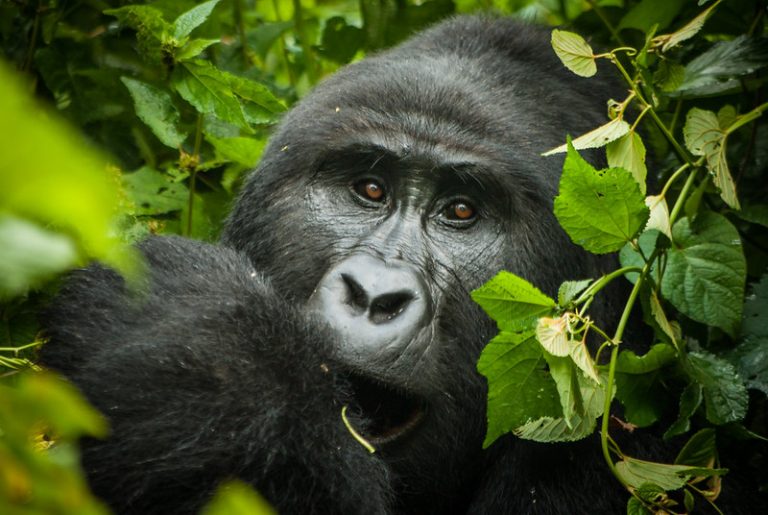What is Gorilla Trekking? Best Destinations for Family-Friendly Gorilla Trekking Preparing for Your Gorilla…
Mangroves National Park | Odzala-Kokoua National Park
Mangroves National Park | Odzala-Kokoua National Park is located in the Democratic Republic of the Congo’s westernmost region. It begins at the mouth of the Congo River and the northern Angolan border. The park is the smallest national park in the DRC, with an area of 297 square miles (768 square kilometres).
This is the DRC’s sole marine-oriented national park, and it is also a Ramsar-listed wetland under the Ramsar Convention. The mangroves differ from those found in Bangladesh and India’s Sundarbans. These mangroves are unique to the DR Congo region, and the national park’s wetlands include mangroves, luxuriant woods, oak trees, walnut trees, red cedar, and African oak.A variety of brush plants and meadows coexist with the forest.
Crocodiles, hippopotamuses, and the endangered manatee all thrive in the Congo River and mangroves. There are also reedbuck, bushbuck, and a variety of reptiles, amphibians, and birds above ground. Some of the most sought-after bird sightings are the African fish eagle, greater flamingo, kingfisher, and goliath heron.
Most visitors experience the national park by boating through the mangroves, the Congo River, and the inlets. The mangroves are a unique and unusual habitat for Africa, making them fantastic for tourist activities and therefore entertaining travellers.
Southeast Asia’s mangroves are famous for harbouring tigers. The mangroves in the DRC provide one-of-a-kind interactions with manatees. Boat cruises along the Congo River are one of the national park’s most popular attractions. The boat cruises allow visitors to see the scenery of the mangroves and river waterfront. Visitors may also look out for crocodiles, hippopotamus, and, of course, the endangered manatee.
wildlife at Mangroves National Park
One of the significant protected areas in the Republic of the Congo is Odzala-Kokoua National Park. While this park is not specifically called “Mangroves National Park,” it does contain mangrove ecosystems along with a variety of other habitats, including rainforests, savannas, and rivers. The park is renowned for its diverse wildlife and is home to a range of species, including:
Forest Elephants: Odzala-Kokoua National Park is known for its population of forest elephants, which are smaller than their savannah counterparts and are specially adapted to life in the dense forests.
Western Lowland Gorillas: The park is also home to western lowland gorillas, a critically endangered species. Visitors to the park have the opportunity to trek through the forest and observe these magnificent primates in their natural habitat.
Chimpanzees: Chimpanzees are another primate species found in the park. They are highly intelligent and social animals and can be spotted during guided treks.
Birds: Odzala-Kokoua is a haven for birdwatchers, with over 400 bird species recorded in the park, including various species of waterbirds that might inhabit the mangrove areas.
Antelopes and other mammals: Other mammal species found in the park include bongos, sitatungas, forest buffalos, and a wide range of monkeys and smaller mammals.
Reptiles and Amphibians: The park is also home to several species of reptiles and amphibians, which contribute to the overall biodiversity of the area.
The best time to visit Mangroves National Park
The best time to visit Odzala-Kokoua National Park in the Republic of the Congo is during the dry season, which typically runs from June to September. This period is considered the high season for tourism, as the weather is generally more predictable, and wildlife viewing is optimal.
During the dry season, the rainforest trails are less muddy and more accessible, making it easier to explore the park on foot or by vehicle. The drier conditions also mean that animals are more likely to congregate around water sources, providing excellent opportunities for wildlife sightings, including gorillas, elephants, and other species.
Keep in mind that even during the dry season, the park is still a rainforest environment, and rain showers can occur. However, they are usually short-lived and won’t affect your overall experience significantly.
Conversely, the wet season, which runs from October to May, brings heavy rainfall and occasional flooding. This can make some areas of the park inaccessible and may limit wildlife sightings. However, the wet season can be a unique and rewarding experience for birdwatchers, as migratory birds are more abundant during this time.
Ultimately, your choice of when to visit Odzala-Kokoua National Park will depend on your preferences and interests. If you prioritize wildlife viewing and ease of travel, the dry season is your best bet. However, if you want to experience the park in a more lush and vibrant state with potentially fewer tourists, the wet season may appeal to you.


